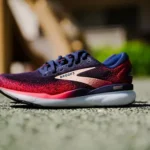Introduction
In the world of sports and human movement, the term “fleet feet” encapsulates a concept revered for its implications on speed, agility, and athletic prowess. Simply put, fleet feet refer to feet that possess exceptional swiftness and nimbleness, often associated with individuals who excel in running, sports, and physical activities requiring rapid movement. This concept is not merely confined to athletic circles; it permeates various facets of life where quickness and agility are valued traits.
Understanding fleet feet holds significant importance across diverse contexts. In sports, whether on the track or the playing field, athletes with fleet feet gain a competitive edge. They exhibit enhanced acceleration, quicker reaction times, and superior maneuverability, allowing them to outperform their peers. Beyond athletics, fleet feet can also influence everyday activities, such as navigating crowded spaces or reacting swiftly to unexpected situations. Recognizing the characteristics and potential of fleet feet can empower individuals to optimize their physical capabilities and achieve peak performance in their chosen endeavors.
The purpose of this blog is to delve deep into the phenomenon of fleet feet, offering insights into its biological underpinnings, its implications in sports and everyday life, as well as practical tips for enhancing fleet foot attributes. By exploring the anatomy and genetics behind fleet feet, discussing their role in various sports disciplines, and examining the psychological and social dimensions associated with this trait, readers will gain a comprehensive understanding of what it means to possess fleet feet. Moreover, this blog aims to debunk myths, provide evidence-based insights, and equip readers with actionable knowledge to harness and nurture fleet foot characteristics effectively.
Throughout this exploration, the blog will not only inform but also inspire readers to appreciate the multifaceted nature of fleet feet. Whether you’re an athlete striving to improve performance, a fitness enthusiast curious about the science behind agility, or simply intrigued by the human body’s capabilities, this blog aims to be a valuable resource. By fostering a deeper understanding of fleet feet, we hope to foster discussions, encourage exploration, and ultimately empower individuals to unleash their full potential in both athletic pursuits and everyday life challenges.
Historical Context
Origin of the Term ‘Fleet Feet’
The term “fleet feet” finds its origins in ancient descriptions of individuals known for their exceptional speed and agility. Historically, it has been used to describe those who possess swift and nimble movement capabilities.
Etymology and Historical Usage
The etymology of “fleet feet” traces back to Old English and Middle English, where “fleet” referred to something swift or fast-moving. Over time, the term evolved to encompass not just physical speed but also agility and responsiveness.
Cultural Significance
In literature and folklore, characters with fleet feet often symbolize heroism and prowess. They appear in tales from various cultures as figures who overcome challenges through their quickness and agility.
Representation in Literature and Folklore
From Greek mythology’s Hermes, the messenger god known for his swift feet, to folk tales of heroes evading danger through agility, fleet feet have left an indelible mark in cultural narratives worldwide.
Biological and Physiological Aspects
Anatomy of Fleet Feet
Fleet feet are characterized by specific physical attributes such as a higher proportion of fast-twitch muscle fibers, well-developed Achilles tendons, and biomechanical efficiency in stride length and frequency.
Key Physical Characteristics
Compared to average feet, fleet feet often exhibit narrower arches, longer toes, and a more pronounced arch-toe balance, which contribute to their enhanced speed and agility.
Physiological Benefits
Having fleet feet provides athletes with distinct advantages in sports requiring rapid movements, such as sprinting and agility-based activities. These individuals typically demonstrate quicker reaction times, improved acceleration, and better overall performance endurance.
Genetics and Inheritance
Research indicates a significant genetic component in determining fleet feet characteristics. Studies have identified specific genes related to muscle fiber composition and tendon elasticity that contribute to speed and agility.
Fleet Feet in Sports and Athletics
Role in Running and Track Sports
Fleet feet are particularly advantageous for sprinters and long-distance runners, where milliseconds can make a difference. Techniques such as plyometrics and interval training can maximize the potential of fleet feet.
Advantages for Team Sports
In team sports like soccer and basketball, fleet-footed athletes excel in roles requiring quick bursts of speed, rapid changes in direction, and effective spatial awareness. Their agility can turn matches in their team’s favor.
Notable Athletes with Fleet Feet
Athletes celebrated for their fleet-footed abilities include sprinters like Usain Bolt and soccer players such as Lionel Messi, whose agility and speed have set them apart in their respective sports.
Adaptation in Training Regimens
Tailored training programs for fleet-footed individuals focus on enhancing speed, agility, and muscle responsiveness through targeted exercises and drills designed to improve specific biomechanical aspects.
Health and Wellness Implications
Common Injuries and Prevention
Despite their advantages, fleet feet can be prone to injuries such as Achilles tendonitis and plantar fasciitis due to the strain from rapid movements. Proper warm-up routines, stretching, and footwear selection are critical for injury prevention.
Footwear Recommendations
Choosing the right footwear is crucial for individuals with fleet feet. Shoes with adequate cushioning, arch support, and stability features can mitigate the risk of injuries and enhance performance.
Long-term Health Considerations
Managing fleet feet as one ages involves maintaining flexibility, strength, and joint health. Regular check-ups with healthcare professionals can identify and address potential issues early on, ensuring long-term mobility and performance.
Psychological and Social Aspects
Psychological Advantages
Possessing fleet feet often correlates with boosted confidence and self-esteem, as individuals feel more capable and empowered in their physical abilities. This can positively impact mental health and motivation.
Social Perceptions and Misconceptions
Society sometimes stereotypes fleet-footed individuals as naturally gifted or inherently superior athletes. Promoting awareness about the training and dedication required can help dispel myths and foster a more nuanced understanding.
Real-life Stories and Case Studies
Notable Personalities with Fleet Feet
From Olympic champions to local heroes, the biographies of individuals with fleet feet showcase their journey, dedication, and achievements in overcoming challenges and reaching the pinnacle of their sports.
Everyday Heroes
Stories of ordinary people with fleet feet highlight how these physical attributes have positively influenced their lives, from excelling in competitive sports to navigating daily activities with enhanced agility and efficiency.
Future Prospects and Innovations
Advancements in Sports Science
Ongoing research and technological advancements continue to explore new methods for enhancing speed, agility, and overall athletic performance. Innovations in equipment and training methodologies are poised to redefine what it means to have fleet feet.
Potential Medical Breakthroughs
Future studies focusing on the genetic underpinnings of fleet feet may lead to breakthroughs in personalized medicine and interventions aimed at optimizing athletic potential and preventing injuries associated with rapid movements.




